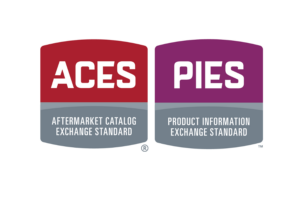By Steve Bach, Sitation’s Director of Automotive Solutions
Products for any industry have many crucial details to organize but this is especially true for the additional compatibility information needed for automotive materials. Several factors contribute to the challenges of managing product data with ACES & PIES fitment in a Product Information Management system.
First, the complexity of the data itself can be daunting, with a vast amount of data points that need to be accurately categorized and maintained.
Second, integrating and mapping data across multiple systems can be difficult, as different systems may use different data structures and formats. This can result in inconsistencies and errors that can impact product information quality and integrity.
Third, keeping up with changes and updates to the standards can be a significant challenge, as standards are constantly evolving, and businesses must ensure that their data aligns with the latest updates. Fourth, managing fitment data can be particularly challenging, as it requires accurately matching parts to specific vehicles and ensuring that the data is kept up-to-date.
Finally, the sheer volume of data that needs to be managed can be overwhelming, requiring a robust PIM system with powerful tools for data management, integration, and analysis. To overcome these challenges, businesses need to invest in robust PIM systems and dedicated data management teams that can effectively manage and maintain their product data, ensuring that it is accurate, consistent, and up-to-date.
Importance of Managing Product Data in the Auto Parts Industry

Managing product data is crucial in the auto parts industry as it plays a vital role in enabling efficient and effective operations, increasing customer satisfaction, and driving revenue growth. With accurate and up-to-date product data, businesses can streamline their inventory management, reduce the risk of errors in order fulfillment, and ensure that customers receive the right parts for their vehicles.
Additionally, robust product data management allows businesses to stay competitive by providing a better online shopping experience for customers, facilitating data-driven decision making, and improving the overall efficiency of their operations.
Brief Overview of ACES & PIES Standards
The Automotive Aftermarket Industry Association (AAIA) created the ACES (Automotive Catalog Exchange Standard) and PIES (Product Information Exchange Standard) as a means of standardizing product data management in the auto parts industry.

ACES is a structured format for exchanging vehicle application data, allowing businesses to easily match parts to specific vehicles. PIES, on the other hand, is a standardized format for product information, enabling businesses to efficiently manage and share product data across different platforms. By adhering to these standards, businesses can improve the accuracy and consistency of their product data, enhance their online presence, and make it easier for customers to find and purchase the right parts for their vehicles.
Key Challenges in Managing Product Data in the Auto Parts Industry
Fragmented Data Sources
In managing product data, one of the main challenges is dealing with fragmented data sources. Product data can come from various sources such as suppliers, manufacturers, data pools, and retailers, making it difficult to consolidate and manage effectively.
Your PIM should allow the project team to load non-standard vehicle fitment data from your suppliers and map it to ACES formats in order to keep your team focused on areas where problems are called-out. Without a central system to manage this data, it can be hard to keep track of updates, changes, and revisions.
Large and complex product data sets
Product data can be large and complex, making it difficult to organize, analyze, and maintain. A Product Information Management (PIM) system can help address this issue by providing a centralized repository for all product information, enabling you to easily manage, enrich and distribute product data across all of your numerous sales channels and supplier networks.
Time-Consuming and error-prone manual data entry
Product data management often requires manual data entry, which is time-consuming and error-prone. With a PIM system, you can automate data entry, reducing the time and effort needed to input data. This also helps reduce the risk of errors, ensuring data accuracy, and improving the overall quality of your product data. Maintaining a standard workflow to manage ongoing fitment updates will highlight areas of coverage where your current catalog contains gaps.
Sharing data with downstream systems
A PIM system can generate data output that complies with ACES & PIES standards, making it easier for businesses to share product information with trading partners and online marketplaces. PIM systems can automatically format product data to meet ACES & PIES requirements, saving time and effort and ensuring that product data is compliant with industry standards. It’s important to understand how you’ll be required to share data with your suppliers and partners in order to select the PIM that meet those requirements.
Conclusion
A Product Information Management (PIM) system can be a game-changer for automotive retailers looking to manage and maintain their product catalogs. With fragmented data sources, large and complex product data sets, and time-consuming manual data entry, it can be challenging to keep product data accurate and up-to-date. However, a PIM system can provide a centralized repository for all product information, making it easy to manage, enrich, and distribute product data across numerous channels.

Additionally, complying with automotive industry standards like ACES & PIES is critical for retailers to sell their products on popular e-commerce platforms. A PIM system can help meet these standards, ensuring accurate and consistent product data across all channels. Overall, investing in a PIM system can help automotive retailers improve the quality of their product data, reduce errors, increase efficiency, and drive sales in order to provide a compelling ROI.
If you haven’t yet invested in a PIM system, it’s time to consider working with Sitation to select the right platform today. Sitation starts by assessing your product data management needs, identifying the right PIM solution, and ensuring compliance with industry standards like ACES & PIES. With the right PIM system in place, you can streamline your operations, enhance your customer experience, and stay ahead of the competition in the automotive retail industry.
Contact us for more information on how Sitation can help strategize your auto industry success.